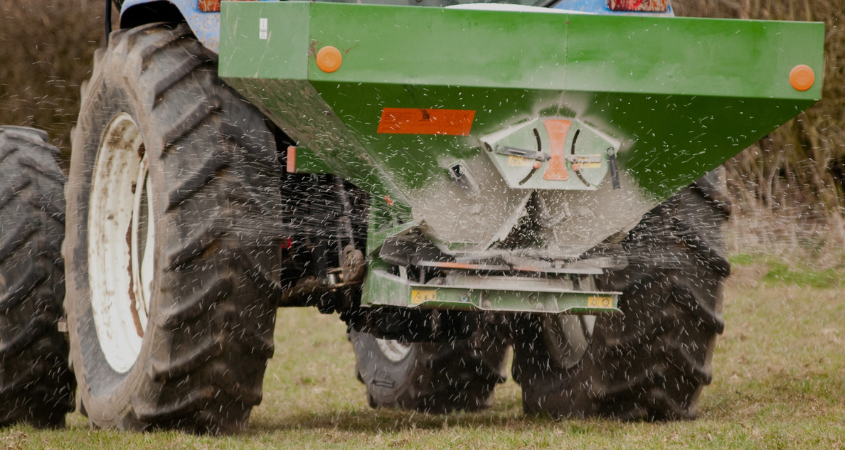
Choosing the right fertilizer spreader is a critical decision in top dressing, as it significantly influences the efficiency and effectiveness of nutrient application. Several factors should be considered when selecting a fertilizer spreader to ensure optimal results.
The spreading width of the fertilizer spreader determines the coverage area per pass. It’s essential to choose a spreader with an adjustable spreading width to match the row spacing of the maize crop. This ensures even distribution and prevents over-application or gaps.
The size of the hopper dictates the amount of fertilizer that can be held and spread in a single application. Select a spreader with an appropriately sized hopper to minimize the need for frequent refilling while covering the entire field efficiently.
Modern fertilizer spreaders come with advanced technology features such as GPS guidance and variable rate application. GPS-guided spreaders ensure accurate placement of nutrients, preventing overlap or skips. Variable rate application allows for customized nutrient rates based on specific areas of the field, optimizing fertilizer use.
The uniformity of nutrient distribution is crucial for consistent crop growth. Choose a spreader with mechanisms that promote even spreading, preventing variations in nutrient availability across the field. Calibration of the spreader is essential to ensure accurate application rates.
Consider the maintenance requirements and durability of the spreader. A well-maintained spreader is less prone to breakdowns, ensuring continuous and reliable operation during the top dressing season.
Different spreaders offer various application methods, including broadcast, side dressing, or foliar application. For top-dressing maize, a broadcast spreader may be used but carries a great risk of leaf scorching after the V6 growth stage. Spreaders that place fertilizer underneath plant leaves are effective in minimizing scorch risks associated with broadcasting.
Assess the initial cost, operational costs, and overall cost-effectiveness of the spreader. While advanced features can enhance precision, they should be balanced with economic considerations to ensure the investment aligns with the farm’s budget.
Certain spreaders may be more suitable for specific types of fertilizers. Ensure that the chosen spreader is compatible with the type of fertilizer planned for top dressing, whether it’s granular urea or another formulation.
Overall, selecting the right fertilizer spreader is integral to achieving optimal yields through effective top dressing. By considering factors like spreading width, hopper size, technology features, uniformity of spread, maintenance, application method, cost-effectiveness, and compatibility, #farmers can make informed decisions that align with their specific field and crop requirements.
Grow more with less
#savesoil #soilhealth #soilscience
Order our services and get to know how to improve your soil for better yeilds.